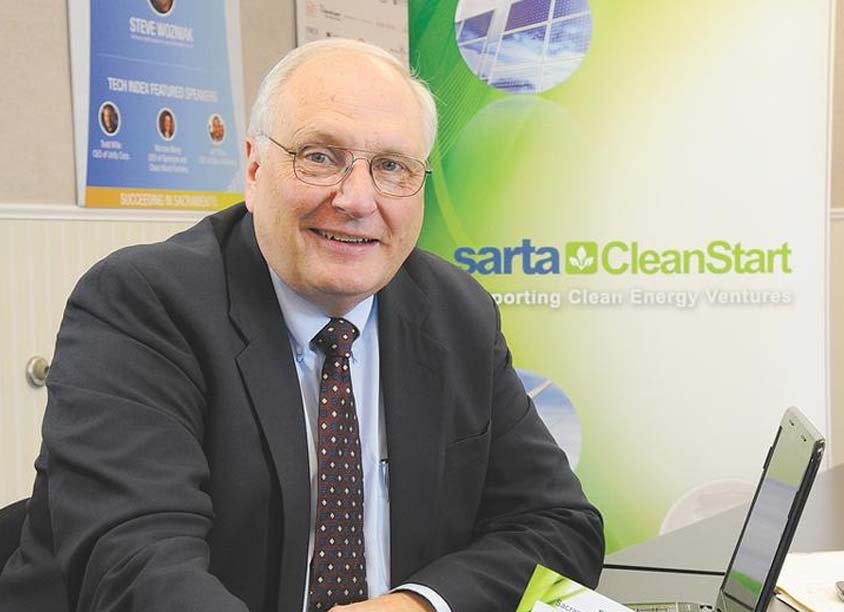
Fearless Predictions for 2021
- EV Sales in US will top 500,000 for the year. According to the Argonne National Lab, 228,247 PHEVs and BEVs have been sold in 2020 through October, with about half of those sales in California. In total, 1,671,874 PHEVs and BEVs have been sold since 2010. In 2020, 748 FCEVs have been sold and in total since 2014, 8,998 FCEVs have been sold. And cumulative sales of Tesla surpassed one million.
- QCLN Index to reach new high over 125. This NASDAQ exchange-traded fund of clean tech stocks hit an all-time high in 2020 of 72 and had a 171% increase over the course of the year. We don’t expect the same performance in 2021, but believe it will break 125 at some point in the year. This the first time in the history of this index that gains have been so good or so promising.
- There will be a huge increase in installed storage projects—3,000 MW will be added in 2021 in the US counting both grid-tied and behind-the-meter storage, and 1500 MW grid-tied capacity in California alone. According to Wood Mackenzie’s U.S. Energy Storage Monitor, the deployments of energy storage projects in all of the U.S. both behind the meter and direct to the grid totaled 791 MW (peak power) and 1,404 MWh (energy capacity) through the third quarter of 2020. The total for the full year was estimated to be 1,275 MW. Of these totals, the amount of grid-tied (front-of-the-meter) peak power added in 2020 was 546 MW and 831 MWh in energy capacity. The cumulative grid-tied peak power since 2013 was 1,655 MW through 3Q2020 with 414 MW behind-the-meter for a total of 2,370 MW*. Cal-ISO estimates that in California cumulatively there are 550 MW at year-end of grid-storage projects (double the amount from July), but does not know how much additional behind-the-meter storage there may be. This also means the utilities fell short of the 1325 MW of storage the CPUC required them to have operational by year end, but at least the capacity was under contract to be added. The new goal is to have 9,900 MW of new grid-tied storage capacity by 2030 (CPUC Decision 20-03-028). *Estimates made by reading off a graph.
- The installed cost of a utility-scale storage project will fall below $350/kWh of energy capacity. According to NREL (https://www.nrel.gov/docs/fy19osti/73222.pdf), the cost of such a system with 4 hours of storage cost $610/kWh in 2015, and had fallen to $393/kWh in 2019. We expect that cost to drop more slowly to $360/kWh in 2020 and fall below $350/kWh in 2021. By 2025, we think it will likely drop below $225/kWh as the surge in installations yields economies of scale.
- A bill will be introduced in Congress to extend Investment Tax Credits to storage projects. It may not pass until 2022, but we think the idea is gaining momentum, particularly since ITC and PTC for solar and wind were extended in the Omnibus Appropriations Act.
- Two renewable-based microgrids with over 1000 customers each will be established in Northern California. We missed on this prediction for 2020, but believe these will be installed in 2021.
- The revenue generated by our regional clean tech companies will top $6 billion. The pandemic restrictions pulled the rug out from underneath this one in 2020, but we think companies are still growing and this milestone will be reached.
- The price of California Carbon Allowances for the first time will exceed $20. They may not average above this price, but we think demand pressures will increase and push the price up. Spot prices now at $17.70 and the Dec. 21 futures price is only $18.60, so we are being pretty bold with our prediction.
- Installed residential solar PV costs for systems under 10 kW will drop below $4.60 per watt. They inched up in 2020 to $4.65 per watt (californiadgstats.ca.gov/charts), but we think the likely end to tariffs on Chinese PV panels will drop the price a few pennies. The largest cost component remains the cost of racking and installation, and we think the increased volume of business will create some economies of scale.
- Two regional cleantech companies will raise a total of more than $50 million to propel their growth. The investments in 2020 slacked off, but we thing they will regain momentum in the coming year.
Follow us in 2021

ABOUT THE AUTHOR
Gary Simon is the Chair of CleanStarts Board. A seasoned energy executive and entrepreneur with 45 years of experience in business, government, and non-profits.
CleanStart Sponsors
Weintraub | Tobin, EY, BlueTech Valley, Revrnt,
Moss Adams, PowerSoft.biz, Greenberg Traurig, Momentum,
College of Engineering & Computer Science at Sacramento State

